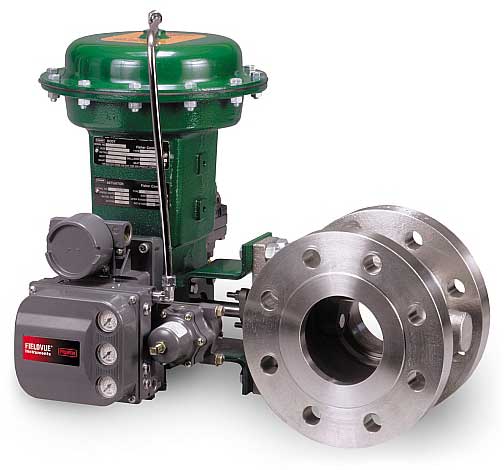Selecting the Right Control Valves: An Overview to Ideal System Efficiency
Selecting the Right Control Valves: An Overview to Ideal System Efficiency
Blog Article

Maximize Power Financial Savings and Convenience With Advanced Building Automation Controls
In the world of modern-day style and center management, the combination of sophisticated building automation regulates stands as a critical improvement. The convergence of technology and sustainability has birthed a brand-new era where power performance, convenience optimization, and functional streamlining are no more far-off goals however achievable realities. By utilizing the power of automation, buildings can adapt, react, and progress in methods that were as soon as inconceivable. The potential for considerable power cost savings and boosted convenience is not just a possibility but an assurance waiting to be met. This standard change in structure administration holds the vital to opening a globe where environmental conscientiousness and owner wellness harmoniously exist together within the wall surfaces of our frameworks.
Energy Performance Advantages
Energy efficiency advantages can considerably reduce energy intake and operational costs in buildings. Energy-efficient systems, such as sophisticated building automation controls, can enhance the use of sources like cooling, heating, and illumination, leading to reduced power expenses over time.
In addition, boosted energy efficiency can prolong the life-span of building tools and systems. By operating extra efficiently, HVAC systems, lighting fixtures, and other structure components experience much less deterioration, causing reduced upkeep and replacement costs. Furthermore, energy-efficient buildings frequently command greater residential property values and rental prices, providing long-term financial benefits to proprietors.
Additionally, energy effectiveness can enhance occupant convenience and efficiency. Properly managed interior settings with optimum illumination and thermal problems create an even more favorable and pleasant workspace, causing boosted employee fulfillment and efficiency. Overall, the energy performance benefits connected with advanced building automation controls are complex, encompassing expense financial savings, environmental stewardship, and resident health.
Enhanced Convenience Control
Enhancing comfort control in structure settings needs a sophisticated assimilation of advanced automation systems for ideal occupant wellness. By using advanced structure automation controls, facilities can customize the interior environment to fulfill the specific requirements and preferences of occupants. control valves.
By including these innovative controls, buildings can not just improve comfort but likewise boost energy performance by optimizing system operations based on actual occupancy and usage patterns. Eventually, focusing on resident comfort through innovative automation systems leads to a more enjoyable and much healthier interior environment.
Functional Efficiency Improvements

Moreover, the implementation of real-time monitoring and analytics tools makes it possible for structure operators to recognize energy inadequacies and functional abnormalities immediately. By continually checking energy usage patterns and system performance metrics, changes can be made in real-time to enhance power usage and guarantee peak operational effectiveness. control valves. In addition, integrating demand feedback techniques right into building automation controls can additionally improve functional effectiveness by dynamically adjusting power use based on grid problems and rates signals
Indoor Environment Optimization
Efficient indoor climate optimization is a fundamental element of building automation controls, making certain owners' convenience and health while making the most of power savings. By making use of innovative sensors and controls, building automation systems can constantly check and change temperature level, humidity levels, air high quality, and ventilation to develop an ideal indoor environment. Preserving regular and comfy conditions More Info not just enhances passenger contentment but likewise enhances productivity and overall well-being.
Interior environment optimization additionally plays an important role in power performance. By fine-tuning cooling, ventilation, and home heating systems based on real-time information and occupancy patterns, building automation controls can considerably lower power intake - control valves. Implementing strategies such as demand-controlled air flow and thermal zoning can aid minimize energy waste while guaranteeing that each area of the building receives the necessary conditioning.

Lasting Atmosphere Production
Building automation controls not only enhance indoor environment problems for energy efficiency and passenger comfort but additionally lay the structure for creating a sustainable environment via critical administration of sources and systems. By integrating advanced building automation innovations, such visit the site as sensors, actuators, and intelligent software program, centers can monitor and change energy use in real-time to lessen waste and lower their carbon impact. These systems enable predictive maintenance, recognizing potential issues before they intensify and enhancing devices efficiency to boost long life and performance.
Moreover, lasting environment development extends past power administration to include water conservation, waste reduction, and indoor air top quality renovation. Structure automation controls can regulate water usage, discover leakages, and make certain proper waste disposal techniques, adding to overall sustainability efforts. Additionally, by controlling and checking ventilation and filtration systems, these innovations boost occupant health and performance while reducing power usage related to HVAC operations.
Final Thought
In conclusion, progressed building automation regulates offer considerable benefits in regards to power cost savings, convenience control, functional efficiency, interior climate optimization, and producing a sustainable atmosphere. By applying these controls, structures can achieve optimum efficiency while minimizing energy intake and improving owner convenience. It is obvious that making use of advanced automation technology is essential in boosting structure efficiency and producing a much more lasting future.
Power performance advantages can significantly minimize power consumption and functional expenses in buildings. Overall, the energy efficiency benefits connected with sophisticated structure automation controls are complex, encompassing cost savings, environmental stewardship, and passenger well-being.
Additionally, integrating demand reaction methods right into building automation controls can better improve operational effectiveness by dynamically their website changing energy usage based on grid problems and pricing signals.
Building automation regulates not just maximize interior climate conditions for energy efficiency and resident convenience but also lay the structure for developing a sustainable atmosphere via calculated monitoring of resources and systems.In verdict, progressed building automation controls deal considerable benefits in terms of energy cost savings, comfort control, functional efficiency, indoor environment optimization, and creating a sustainable environment.
Report this page